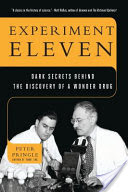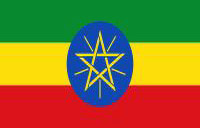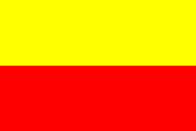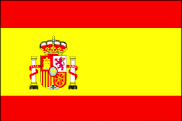
Selman A. Waksman
The Nobel Prize in Physiology or Medicine 1952
Ukrainian-born American Microbiologist, Biochemist. Isolated several antibiotics including Streptomycin for Tuberculosis and Neomycin. Proceeds earned from patents funded Waksman Institute of Microbiology and Waksman Foundation for Microbiology.
"The Lord hath created medicines out of the earth; and he that is wise will not abhor them. Ecclesiasticus, XXXVIII , 4"
Albert Schatz Co-discoverer of Streptomycin
 Dr. Schatz Wins 3% of Royalty; Named Co-Finder of Streptomycin; KEY FIGURES IN STREPTOMYCIN DISCOVERY SUIT, Special to The New York Times, December 30, 1950
Dr. Schatz Wins 3% of Royalty; Named Co-Finder of Streptomycin; KEY FIGURES IN STREPTOMYCIN DISCOVERY SUIT, Special to The New York Times, December 30, 1950
Notebooks Shed Light on an Antibiotic's Contested Discovery By Peter Pringle, New York Times, June 11, 2012

In 1943, Albert Schatz, a young Rutgers College Ph.D. student, worked on a wartime project in microbiology professor Selman Waksman's lab, searching for an antibiotic to fight infections on the front lines and at home. In his eleventh experiment on a common bacterium found in farmyard soil, Schatz discovered streptomycin, the first effective cure for tuberculosis, one of the world's deadliest diseases.
As director of Schatz's research, Waksman took credit for the discovery, belittled Schatz's work, and secretly enriched himself with royalties from the streptomycin patent filed by the pharmaceutical company Merck. In an unprecedented lawsuit, young Schatz sued Waksman, and was awarded the title of "co-discoverer" and a share of the royalties. But two years later, Professor Waksman alone was awarded the Nobel Prize. Schatz disappeared into academic obscurity.
For the first time, acclaimed author and journalist Peter Pringle unravels the intrigues behind one of the most important discoveries in the history of medicine. The story unfolds on a tiny college campus in New Jersey, but its repercussions spread worldwide. The streptomycin patent was a breakthrough for the drug companies, overturning patent limits on products of nature and paving the way for today's biotech world. As dozens more antibiotics were found, many from the same family as streptomycin, the drug companies created oligopolies and reaped big profits. Pringle uses firsthand accounts and archives in the United States and Europe to reveal the intensely human story behind the discovery that started a revolution in the treatment of infectious diseases and shaped the future of Big Pharma.

Experiment Eleven. Find in a library near you. In Worldcat page scroll down to libraries which possess book.
 Discovering Albert, Carl Sigmond. In 1943, Albert Schatz discovered streptomycin, the first effective cure for tuberculosis, while doing graduate research at Rutgers University. His discovery saved millions of lives and resulted in the closure of tuberculosis sanitariums around the world. His research advisor, Selman A. Waksman, stole the credit for the discovery and won the 1952 Nobel Prize in Physiology or Medicine. This film, told through the eyes of Albert's grandson, Carl, traces the effect this discovery and the loss of credit had on his family. Published on Jun 6, 2012. 10:40.
Discovering Albert, Carl Sigmond. In 1943, Albert Schatz discovered streptomycin, the first effective cure for tuberculosis, while doing graduate research at Rutgers University. His discovery saved millions of lives and resulted in the closure of tuberculosis sanitariums around the world. His research advisor, Selman A. Waksman, stole the credit for the discovery and won the 1952 Nobel Prize in Physiology or Medicine. This film, told through the eyes of Albert's grandson, Carl, traces the effect this discovery and the loss of credit had on his family. Published on Jun 6, 2012. 10:40.
Discover Your Abilities and Aspirations!
 $10 $25 $50 $100 Other
$10 $25 $50 $100 Other
Tax Exempt 501(c)3 Non-Profit Organization
Any Currency
“…the peace that is found in libraries and laboratories…” - Louis Pasteur
Copyright © 2023 Ganga Library Inc. All Rights reserved.;

Painting Tim Tompkins PaintHistory.com
Name: Selman Abraham Waksman
Birth: 22 July 1888, Priluka (now Nova Pryluka), Russian Empire (now Ukraine)
Death: 16 August 1973, Hyannis, MA, USA
Affiliation at the time of the award: Rutgers University, New Brunswick, NJ, USA
Prize motivation: "for his discovery of streptomycin, the first antibiotic effective against tuberculosis"
Field: anti-bacterial agents, bacteriology
Prize share: 1/1
Biography
Books
Publications
Patents
Albert Schatz, co-discoverer of streptomycin
Videos













